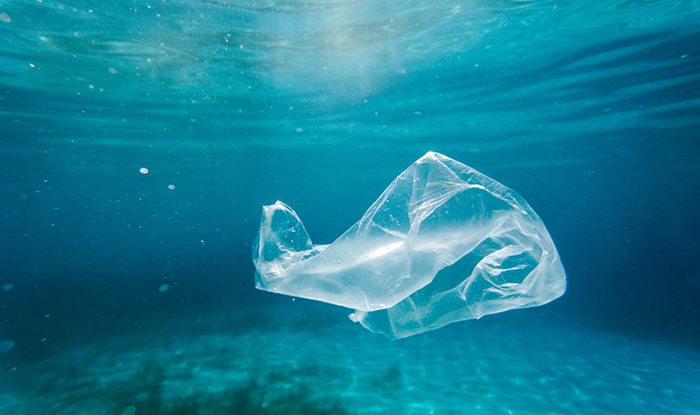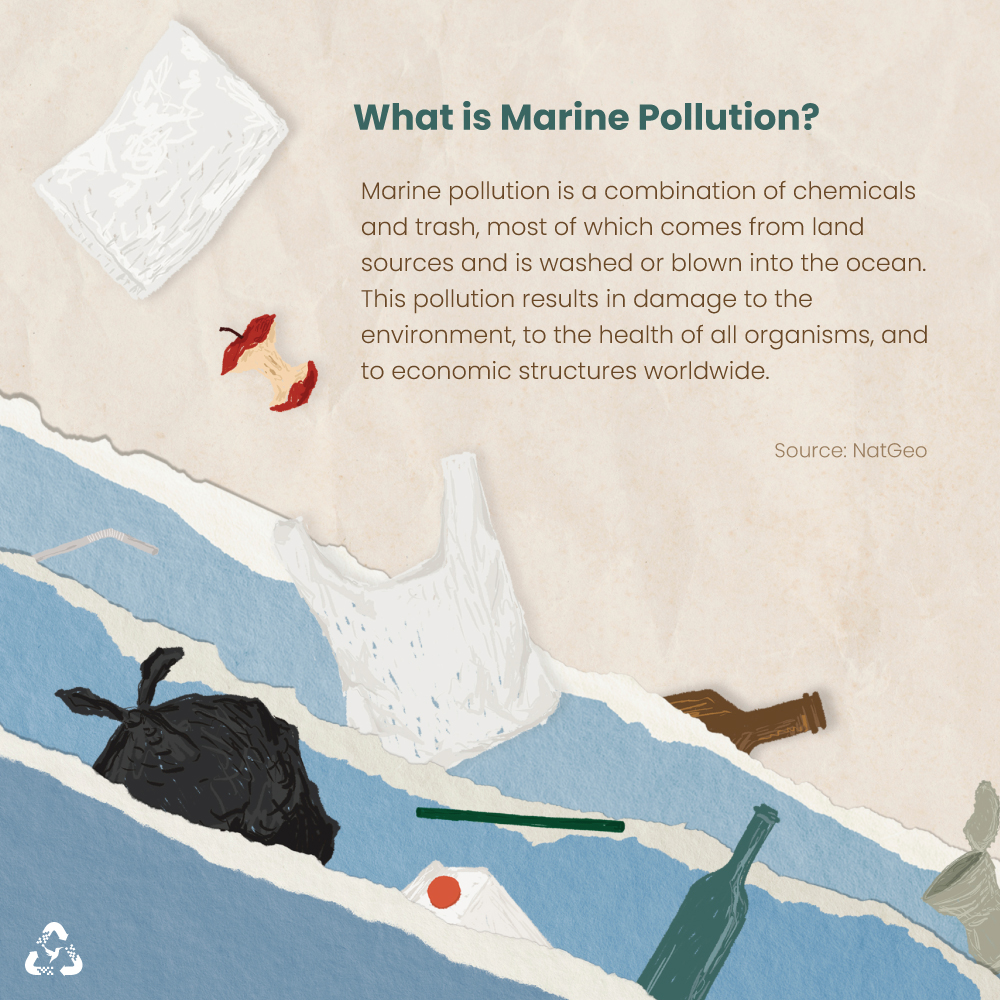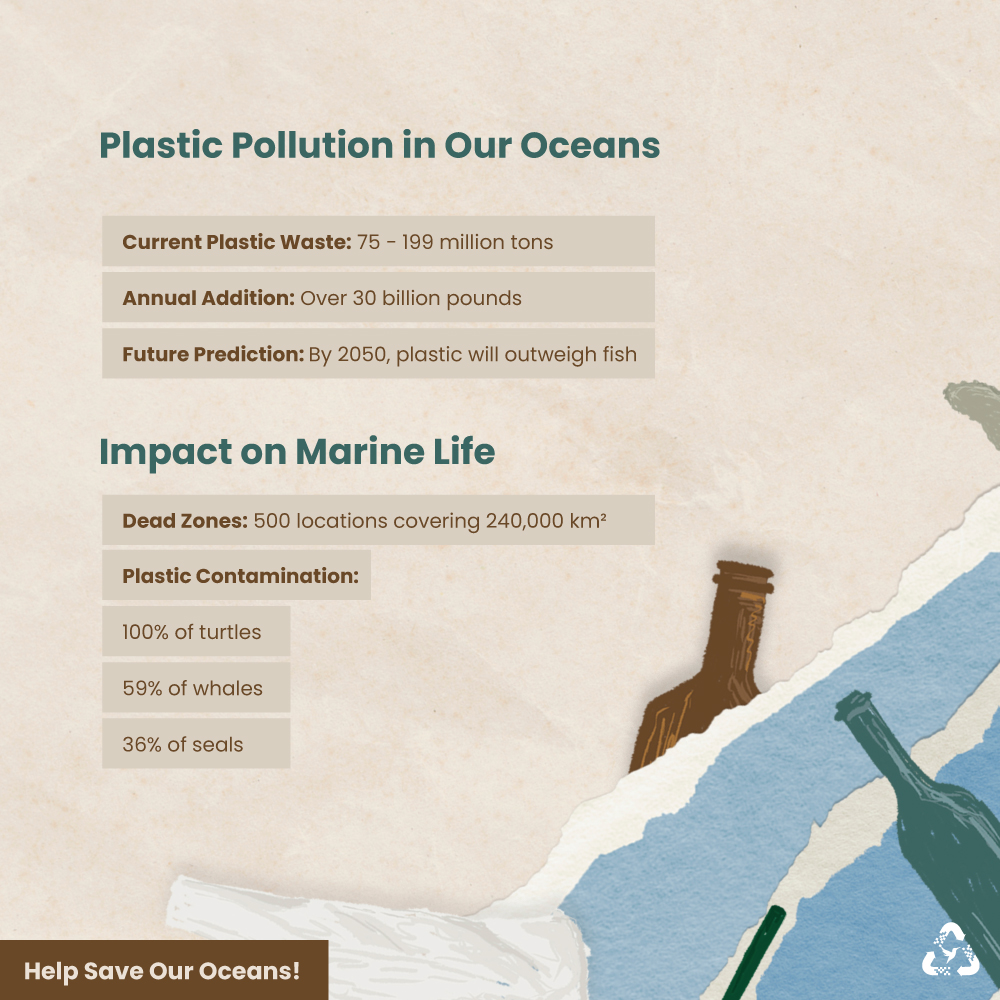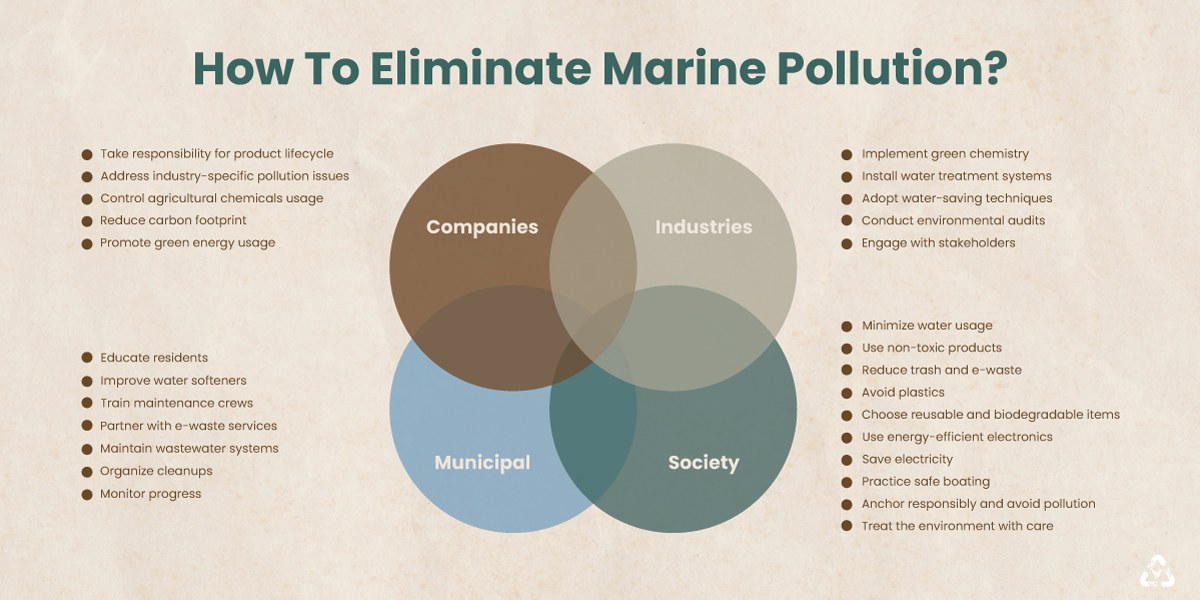E-Waste in the Ocean: The Unseen Pollution Threatening Marine Life

Photo Credit: iStockPhoto/MelkiNimages
The past decade has seen massive increases in the production, distribution, and application of electronic devices worldwide. From Fortune 500 companies to small garage shops, all have at least one but mostly multiple electronic devices in use. As a result, it has also increased the amount of e-waste.
Here are some ocean pollution facts. As per a study from the United Nations Institute for Training and Research (UNITAR), the world generated 62 MT of e-waste in 2022, which is expected to reach 82 MT by 2030. To make matters worse, less than one quarter (just over 22%) of it was properly collected and recycled. The rest? Unaccounted for in our environment and since more than 70% of the Earth is oceanic bodies, a large proportion of e-waste ends up there one way or another, causing ocean pollution.
Ocean pollution is a worldwide problem harming not only marine life but also humans, wildlife, plant life, and our whole mother nature. In this article, we will learn about ocean pollution and its catastrophic impacts on Earth, and discuss ways to fight back and eliminate it.
What is Ocean Pollution?
Ocean pollution is the accumulation of toxic materials, such as plastic, organic matter, chemicals, agricultural waste, industrial waste, and electronic waste.
Mostly, all pollutant-filled debris is dumped into the oceans by humans. Other than that, a lot of it originates on land and later enters the ocean through various means, including littering, poor waste management standards, stormwater discharge, and natural disasters like tsunamis, tornados, and hurricanes.
Causes of Ocean Pollution
In today’s day and age, preserving natural resources is essential for the global economy, and the most vital natural reserve is water that powers all of life. However, the continuous accumulation of wastes, pollutants, and electronics in the ocean makes it toxic and inconsumable for consumption, unfit for sustainability, and inhabitable for marine life.
So, to prevent it, it is essential to learn what causes such drastic effects.
Here are some of the top and most common causes of ocean pollution.
• Garbage Waste
Garbage waste includes plastic, plastic-containing materials, cigarette butts, tires, straws, nettings, etc. All of these are harmful to underwater ecosystems as marine life often ends up choking on them, eating them, getting entangled in them, and suffocating them. As a result, most of the affected animals die instantly or after some time due to gut toxicity.
• Electronic Waste
E-waste includes electronic devices as a whole or some components like broken motherboard parts, nonrecyclable material, RAMs, switches, connectors, and accessories like mice, keyboards, cables, etc.
In 2019, the total e-waste collection was more than 53 tonnes worldwide, out of which, the recycled amount was only 17.4%. This e-waste, which contains several toxic and hazardous materials such as approximately 50 tonnes of mercury, ends up in the ocean. As a result, it poses life-threatening problems in marine animals, including choking, toxicity, poisoning, or simply causing marine pollution.
Therefore, it is essential to purge the environment of the hazards of E-waste, and one of the best ways is to recycle it. Preventing ocean pollution is only one of the ten big reasons to recycle e-waste. Other than that, recycling also provides useful materials and keeps them off the streets or oceans.
• Chemical Waste
Chemical waste from skincare products, sunscreens, and others containing sun protection elements, oxybenzone, and octinoxate chemicals are harmful to whole marine life. Some elements especially affect corals and green algae interfering with their mechanisms and killing them. Moreover, these chemicals can cause fertility issues in mammals like dolphins.
• Agricultural Waste
Agriculture farmers and caretakers often spray insecticides, pesticides, and fertilizers to keep the plants safe and healthy. However, the excess of these chemicals can gather in nearby streams, ponds, or water sources, and end up in the oceans.
• Industrial Waste
Industrial waste refers to the solid, semi-solid, or liquid waste produced during the manufacturing processes. Although many industries separate hazardous from non-hazardous material, many often don’t appropriately treat or discard it due to bad septic systems or maintenance. Mostly, it is spilled directly into the ocean, in the surroundings, or with regular garbage, and reaches the ocean. As a result, it contaminates the area where it stays and becomes a source of a range of contaminations, especially ocean pollution.
• Atmospheric Waste
Atmospheric waste pollution happens when the wind carries dust, debris, plastic materials, small pieces, toxic gasses, and other harmful substances into the oceans. Also, dust storms and tornadoes push many polluted elements into the ocean. Ultimately, the ocean starts absorbing these pollutants and marine life suffers heavily.
How Much Pollution is in the Ocean?
There are 4 oceans in the world, namely the Atlantic, Pacific, Indian, and Arctic, and 5 if you include the Antarctic. Researchers and marine life experts have been working on unraveling the enigma of oceans, but there are still many unexplored regions, undiscovered species, and hidden mysteries. However, one thing is certain and easily understandable without even visiting the oceans: the pollutants, chemicals, and e-waste in the ocean are causing irreparable damage.
Over the years, a huge amount of toxic waste has contaminated the oceans.
Below we have mentioned a few shocking ocean pollution facts and statistics that you must know to help save the oceans, marine life, and the environment.
- There are approximately 75 – 199 million tons of plastic waste currently in the oceans.
- An estimated over 30 billion pounds of plastic waste enter the underwater ecosystem every year.
- Research predicts that by 2050, plastic will outweigh the fish in the sea.
- Also, around 500 marine locations (covering over 240,000 km square) are marked dead zones all over the world.
- Plastic pollution is drastically affecting marine life. Research found plastic contamination in 100% of turtles, 59% of whales, and 36% of seals.
Due to its wide adverse effects, ocean pollution affects other life on Earth as well. The fish we consume likely contains plastic, the water may be contaminated, and the air may contain toxins harmful to plants and humans alike.
Harmful Effects of Ocean Pollution
Here is a breakdown of the harmful effects of ocean pollution on different life forms.
• On Marine Life
Marine life is closest to ocean pollution and thus suffers the most damage. There are following three types of plastics in the oceans:
| Type of Plastic | Size | Origin | Threats |
| Macroplastic | Bigger than 20mm | Fishing gear, plastic bottles | These can capture and entangle fishes and mammals. The trapped marine animals usually starve, injure themselves, or fall prey to predators. These can also break and harm coral reefs. |
| Mesoplastics | Ranging from 5mm to 10mm | Plastic pellets, pieces of broken-down plastic | Small bits and pieces of plastic can float on the ocean surface, where it can be mistaken for food by seabirds as well as marine species. It can cause suffocation or gut toxicity. |
| Microplastics and nanoplastics | Smaller than 5mm | Microfibres are present in textiles, granules of face scrubs, and toothpaste. | These types of plastics are microscopic and invisible to the naked eye. As a result, marine life consumes it without knowing. With it, they intake toxins, which can damage tissues and other organs. |
Moreover, here is a table showing harmful materials from electronics that end up in the oceans or water and their health effects.
| E-Waste Materials and Components | Environmental Harm |
| Cathode Ray Tube | It contains heavy metals including lead, barium, and others. Also contains phosphorus that sticks into groundwater. |
| Circuit Boards | It produces air emission of components. |
| Chips and gold plated materials | It contains hydrocarbons, heavy metals, brominated elements, and other harmful chemicals that reach rivers and oceans causing acidification and toxicity harming the flora and fauna. |
| Computer Wires | It contains hydrocarbons that release into the atmosphere, water, and soil. |
| From metal burning | It produces dioxins that cause cancer and tumors. |
These harmful materials and chemicals are badly affecting marine life, and immediate attention is mandatory to save our planet. There are various recycling guidelines for e-waste that should be followed by every state and country to prevent ocean pollution.
• On Humans and Wildlife
Humans and wildlife are also not safe from ocean pollution. Chemicals, plastics, and electronic waste pollution in the ocean contaminates the drinking water supply, fish, and the surrounding air. As a result, consuming contaminated water or eating fish from it can cause food poisoning in children and adult humans and animals.
Moreover, agricultural, industrial, and e-waste releases harmful chemicals in the ocean, such as coal, mercury, and others. These can cause dementia, amnesia, brain damage, and even sudden death.
Toxic microscopic particles from plastic ocean pollution also transfer to humans and animals. These can cause serious internal damage.
• On the Environment
The debris in the ocean takes a lot of time to break down and use oxygen to degrade, which results in a decrease in oxygen levels in the ocean. Moreover, harmful substances and chemicals yield nitrogen and phosphorus, which also depletes oxygen.
The contaminated water that runs through the soil also damages the surrounding plant life and pollutes the air. It poses a serious risk to land and aquatic plants.
How To Eliminate Oceanic Pollution?
Every year, we produce approximately 300 million tonnes of plastic waste and around 40 million tonnes of e-waste. Most of it ends up in the ocean, causing pollution in nearly every part of it.
If we do not address it timely, it will contaminate the whole water supply of the world, causing the death of every living organism. Therefore, we all must work together to mitigate risks and eliminate every trace of pollutants and waste in the ocean.
• Role of Companies
Every company, business, and industry must take the following measures to fight the global ocean pollution problem:
- Take full responsibility for the lifecycle of products.
- Must address issues according to the nature of business, for example, the tourism industry must take drastic measures to limit plastic use and encourage recycling.
- Control usage of pesticides, herbicides, and fertilizers along with other agricultural chemicals according to the needs.
- Work to reduce carbon footprint and promote usage of green energy.
Other than this, companies must collaborate with other companies and e-waste recycling and collection centers to regulate proper recycling.
• Role of Industries
Industries and factories have a huge hand in multiple types of pollution, including air and ocean pollution. Here are some necessary steps the whole industrial sector must follow:
- Use green chemistry, including renewable resources, decrease waste, and steer clear of toxic chemicals.
- Use water treatment systems and implement throughout the industry to eliminate pollutants from industrial waste before dumping it into the environment. These include physical, chemical, biological, and membrane systems.
- Adopt water-saving techniques and conservation practices to limit the use and wastage of water. Implementing a Rainwater diversion system, for example, is a powerful way for both homes and industries to conserve water and reduce runoff, often requiring Water storage tanks to hold the collected resource.
- Routinely evaluate environmental performance and compliance with industry standards through audits and systemic assessments.
- Conduct meetings with stakeholders to discuss techniques and strategies to save water and reduce water pollution.
These practices will enable industries to minimize their impact on causing ocean pollution.
• Role of Municipal Parties
Municipal parties can either be district-wise, city-wise, or country-wise. They manage the area’s basic needs, like water and sewage systems, but they are also responsible for regulating proper electronic waste disposal. Municipal party leaders must adopt the following best practices:
- Educate residents about the impact of ocean pollution and its causes.
- Enhance water softener to reduce salt discharge into the sewers.
- Train their crews in season-wise maintenance best practices.
- Must collaborate with an e-waste collection and recycling service provider.
- Routinely check and maintain the area’s wastewater and sewage systems.
- Organize area, beach, and river cleanups to reduce waste.
- Monitor and measure progress.
Municipal party leaders must collaborate effectively with the government to approve waste reduction and e-waste recycling programs.
• Role of Societies
Every one of us in a society must fulfill our duties to keep our oceans and environment healthy. As individuals, we must use the following ways to help our oceans.
- Minimize water consumption by eliminating excess runoff and any other way we can.
- Use non-toxic chemicals and chemical-containing products, and dispose of each of them properly.
- Reduce the amount of trash, garbage, and e-waste.
- Avoid buying plastic containing things like bags, disposable spoons, plates, cups, etc.
- Choose reusable and biodegradable products.
- Efficiently use electricity by purchasing energy-efficient electronics.
- Practice safe boating and anchoring.
- Treat the environment with care, like one treats one’s home.
Other than this, we must volunteer in cleanup duties and waste-reducing events to minimize pollutants, contaminants, and electronics in the ocean.
E-waste recycling not only prevents harmful components from ending up in our oceans but also helps maintain security and confidentiality. Before giving out your old laptops or pc components for disposal and recycling, make sure to:
- Follow a proper and secure hard drive disposal process
- Take strict measures to prepare your laptop(s) for recycling
- Take essential steps to prepare your monitor or LCD screens for recycling
Final Takeaway
Ocean pollution is a highly dangerous problem that impacts not only marine life but the whole Earth. One of the major causes of ocean pollution is e-waste, which is in itself a rising threat to our environment. We generate millions of tonnes of e-waste every year, and a huge amount of it ends up in the ocean, affecting the marine ecosystem badly.
We must carefully address our mistakes and collaborate to eliminate waste in the ocean. The best way for this is to recycle e-waste. Several countries are implying strict laws regarding safe e-waste recycling and disposal. Additionally, there are also free e-waste pickup services that aid in this regard.
We must all join hands together to save our planet from ocean pollution.
About The Author Kelly Sampson
Kelly Sampson is a writer, blogger, and environmental enthusiast. She has strong opinions about climate change, the dogs vs. cats debate, and Oxford commas. She has lent Hummingbird International her engaging and spirited voice and turned our blog into a great place to find valuable information about e-waste, e-waste recycling, and the ITAD industry. Explore our blog to read more of her work.










